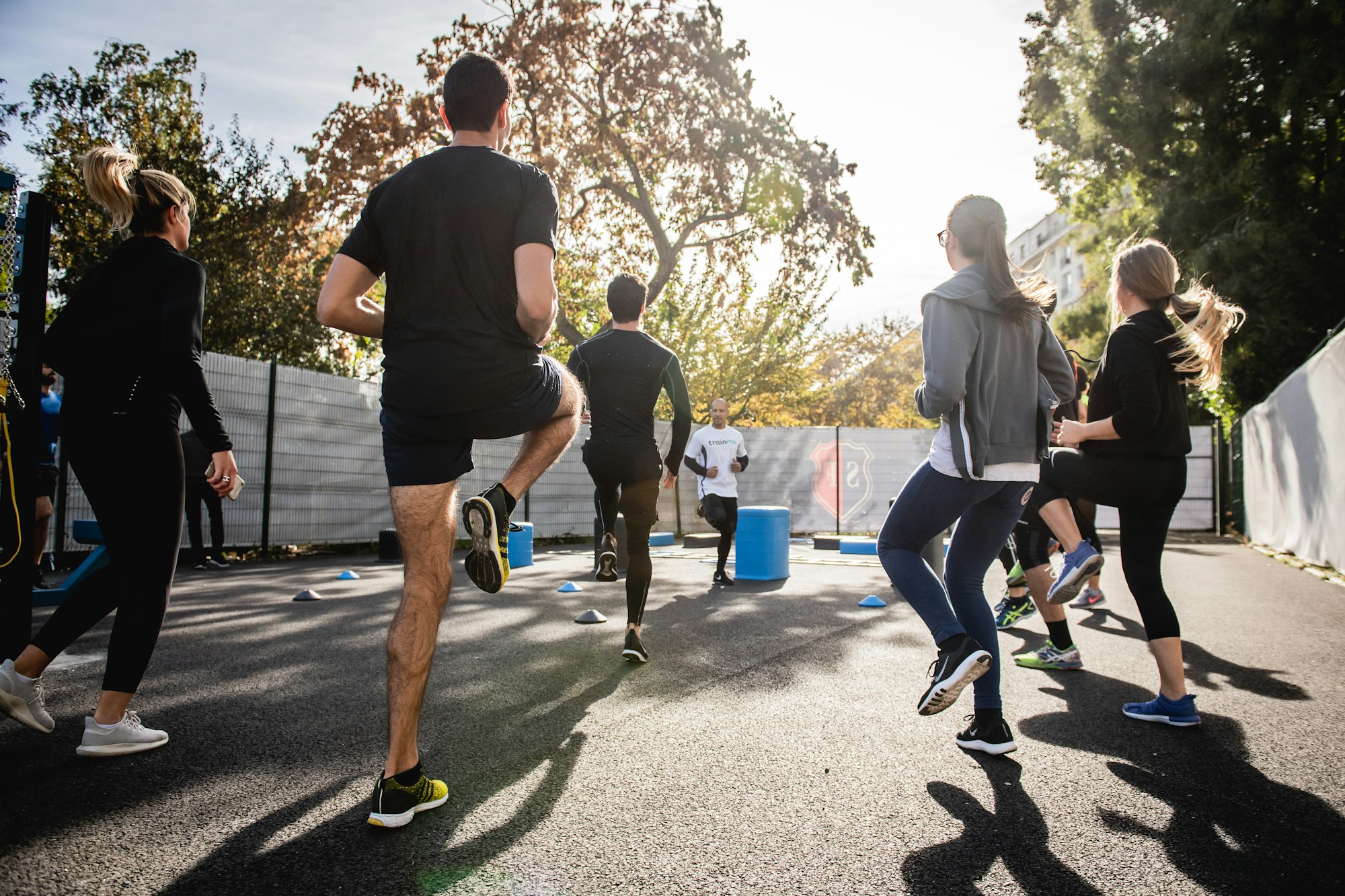Skip the book and get straight to action with this super simple checklist. All the key ideas are transformed into actionable steps.
Overview
This book encourages you to use small steps to start new habits or quit old ones. Like the interest in a bank account, those small adjustments can compound over time, leading to big life changes.
TL;DR
- Alternative to: Setting goals, Going "cold turkey"
- Energy required: Low to Medium
- Expect results in: Weeks to Months
- Best for: Busy people, Young Professionals, Productivity Enthusiasts
The Checklist
Create a New Habit
- Define your new habit in a statement: "I will [behavior] at [time] in [location]"
- Create a visual or behavioral cue to encourage the new habit
- Stack your new habit with an existing habit
- Make your new habit enticing
- Make it easy to do
Stop an Old Habit
- Remove cues from your environment
- Make it difficult to do
- Highlight the disadvantages


Supporting Material
Here's a list of resources to help you on your journey in building new habits.

Example Atomic Habits Checklist
Create a New Habit [EXAMPLE]
- Define your new habit in a statement.
Example: "I will do 10 pushups at 8AM in my house." - Create a visual or behavioral cue to encourage the new habit.
Example: place a yoga mat next to your bed, where you will do pushups. - Stack your new habit with an existing habit.
Example: do pushups immediately when you get out of bed in the morning. - Make your new habit enticing.
Example: place your phone on the floor and watch entertaining videos while doing pushups. - Make it easy.
Example: start with 1 pushup on the first day, then 2 pushups on the second day, then increase to each day until you reach 10 pushups per day.
Stop an Old Habit [EXAMPLE]
- Remove cues from your environment.
Example: to avoid using social media, remove the shortcut or any bookmarks from your home screen. - Make it difficult to do.
Example: to avoid eating junk food, move it to a place out of sight (like a hard-to-reach spot in the pantry). - Highlight the disadvantages.
Example: to avoid eating junk food, print out a list of negative health effects from eating junk food, and place this on the fridge.
This publicly available page on the authors website lists several supporting materials for the book:
PRIMARY RESOURCES
- The Habit Loop
- The Habits Cheat Sheet
- Media: Images and Figures
- Key Questions and Answers
- Personality Tests
- End notes
TEMPLATES
- Habits Scorecard Template
- Implementation Intentions Template
- Habit Stacking Template
- Habit Tracker template
- Habit Contract template and example
BONUS CHAPTERS
BONUS TEMPLATE
Looking for more?
Check out some of our very own printable checklists.
How I Would Use This Checklist
Here's what I would do. And brace yourself because we're about to go deep.
- Start with a journal.

There's a lot going on these days. Life feels more complicated than ever.
It helps to think, write, or speak about it.
To reflect.
Maybe you have a friend you can partner with on this exercise. Otherwise you can use pen and paper, I prefer to speak to my phone and have it transcribe what I'm saying.
Describe what's going on in your mind. Talk about what happened during the day or night. Talk about what you plan to do today or tomorrow.
You might want a to explore some apps to help you take notes. Personally I enjoy using Daylio and journal almost every day.
After a few days, maybe a few weeks, you'll start to "get a grip" on what's happening in your life.
Are you happy?
If you answered yes, then I have no further advice for you.
If you can't say yes, then what you do next should be 100% focused on helping you enjoy your life.
2. Think about what you want to change, and turn it into a goal.
Consider those areas in your life that could use improvement, finance could be an easy one.
You decide that you want to increase your net worth, and that this will lead to a more enjoyable life for yourself.
So what's a daily habit you could establish to help with that?
Here are a few ideas:
- Spend 5 minutes a day reviewing your budget
- Spend 30 minutes a day reading about personal finance.
- Spend 15 minutes a day planning and preparing your meals for the next day.
- Spend 30 minutes a day practicing to interview, so you can land a better job.
Now that you have a few ideas, that's where this habit checklist comes into play.
3. Import the template with Todoist, or print the PDF.
For each habit you've identified, follow the checklist.
Keep track of your progress and accomplishments, and try out a few habit apps, or habit trackers (PDF's work, too).
Common Questions
What exactly is a habit?
A habit is something we do regularly, usually without thought or planning.
How Do I Know if a Habit is Good or Bad?
Habits can be good. They can make life easier, more enjoyable, and help in many ways.
They can also be bad, with immediate or long-term negative effects.
Sometimes it's hard to tell unless you look at the bigger picture.
Smoking cigarettes, for example, may make you feel better in the short term, but cause severe disease in the long-term.
This is why Clear recommends a habit scorecard, to help you gauge the long-term effects and provide a more clear positive or negative indicator of the usefulness of a habit.
Tracking over time allows you to look at the advantages and disadvantages without getting distracted by the immediate effects.
Should I Use a Habit Tracker?
For important habits, yes!
A habit tracker helps you track your habits over time. Usually these are daily habits over the course of weeks to months. With minimal effort, a habit tracker helps you monitor your activity and how well its working for you.
It can also motivate you to keep going (also called "don't break the chain"), or help you make decisions on changing your approach.
What To Do When You Can't Keep Your Habits?
Usually the first thing to do is make it easier to accomplish your habit.
For example, if you're trying to start a habit of exercising in the morning, consider making the exercise a simple routine, like walking outdoors for 5 minutes.
Lowering the barrier to accomplish the task can help you complete your habit and get you back on track.
If you're still having trouble, consider the other areas of the "Create a habit" checklist, like creating cues and attaching the new habit to an existing one.
If you've followed all the advice in creating a new habit, and checked the list of resources above, consider reading the full book Atomic Habits by James Clear. He provides thorough examples and in-depth explanations on how to navigate the pitfalls of losing progress.
How Long Do I Need to Track My Habits?
As long as they're important to you, or until they're second nature.
Most people don't track how they brush their teeth because it's ingrained in us to do this (of course, I'm assuming all of us do it). Once your habit becomes ingrained, where you complete it without thinking, you can consider that part of your daily routine.But, if you need to track for example, taking medicine every day, where it's important not to miss a dose, you may want to keep that habit tracker active.
How Much Does Discipline Matter in Building Habits?
Discipline matters a lot when building habits. It's not enough to just want to do something; you need to be committed to doing it consistently until you've built up the habit.
To elaborate on this, I would suggest that commitment matters more than discipline. That is, your commitment to establishing a habit (seeing it through) matters more than your discipline (your ability/willpower) to do it every day.
Commitment is long-term resolve, where discipline is short-term willpower. In my opinion, it's reasonable to skip a day (for example if you're sick) but to get back on track when you're healthy. Rather than expending the little energy you have, if you're sick, to completing your habit every day, which may lead to burnout and leave you worse-off in the end.
How Do You Create a Habit Scorecard
A habit scorecard helps you determine which habits are helping you or hurting you. It's one way to increase your self-awareness of your daily activity.
Use a sheet of paper and make two columns: one of the description or name of the habit, and one for whether it has a positive or negative effect. Keep it close by throughout the day and jot down any habits you notice yourself doing. Like this:
Habit | Effect
Drinking coffee | Positive
Picking at skin | Negative
Browsing social media | ??
If you happen to come across a habit where you're not sure if it's positive or negative, take a few days to consider how it makes you feel. When you browse social media, does it leave you feeling happier? How much time do you spend? Do you think it is a good use of your time? Are there other, more important things that get neglected because of your time spent on social media?
These questions will help you determine which habits to keep and which to get rid of.
Want more help? Use Clear's Habit Scorecard template to assist you.
Subscribe
New templates in your inbox and full access to the entire catalog.



